So Your Garden Style Is: Natural
Create your own private wilderness with a natural garden planted with drifts of grasses and perennials
Renowned Irish garden designer William Robinson came up with the idea of natural or wild gardens back in the 19th century as a reaction against the stuffy Victorian style of gardening with acres of ‘bedding plants’ (flowering annuals) laid out in pretty patterns. Robinson advocated informal, large groupings of perennials and native plants in natural-looking drifts. Fast forward nearly 200 years and Robinson’s revolution is taking place all over again with many modern landscape designers such as James Van Sweden and Wolfgang Oehme in the US and Australian Rick Eckersley favouring a more natural, environmentally-friendly style of gardening using large, informal groups of natives and exotic plants.
Contemporary natural gardens are designed to be as low maintenance as possible. Plants have to survive with limited water and fertilisers, and no pesticides. To do this, they must be suited to the conditions of your site: soil type, levels of sun or shade, wind exposure, moisture and nutrient content of soil. In the wild, all plants grow in specific habitats: coastal, rainforest, grassland, bog, and so forth. You probably have a variety of habitats in your garden: an exposed, dry area (coastal) and perhaps a warm, sheltered subtropical area. To create your own easy-care natural garden, identify the different habitats on your site, then choose the plants to suit.
Contemporary natural gardens are designed to be as low maintenance as possible. Plants have to survive with limited water and fertilisers, and no pesticides. To do this, they must be suited to the conditions of your site: soil type, levels of sun or shade, wind exposure, moisture and nutrient content of soil. In the wild, all plants grow in specific habitats: coastal, rainforest, grassland, bog, and so forth. You probably have a variety of habitats in your garden: an exposed, dry area (coastal) and perhaps a warm, sheltered subtropical area. To create your own easy-care natural garden, identify the different habitats on your site, then choose the plants to suit.
Create texture
The ornamental grasses planted in this Sydney garden are an important feature in natural gardens, adding dramatic textural and foliage contrast. They also provide seasonal interest with their lovely seed heads and flower spikes, as well as food and shelter for wildlife.
Australian native grasses such as pennisetum (make sure they’re a cultivar of Pennisetum alopecuroides, which has a much wider plume than the exotic variety, and is non-invasive), lomandra and dianella are perfect plants for the natural garden, as are New Zealand flaxes and flax-like plants such as astelia and libertia.
The ornamental grasses planted in this Sydney garden are an important feature in natural gardens, adding dramatic textural and foliage contrast. They also provide seasonal interest with their lovely seed heads and flower spikes, as well as food and shelter for wildlife.
Australian native grasses such as pennisetum (make sure they’re a cultivar of Pennisetum alopecuroides, which has a much wider plume than the exotic variety, and is non-invasive), lomandra and dianella are perfect plants for the natural garden, as are New Zealand flaxes and flax-like plants such as astelia and libertia.
Go native
Native plants are the obvious choice for natural gardens because they look as though they belong to the landscape, without too much effort on your part. They’re also easier to maintain than exotics if you choose species that grow naturally in your particular region. In this Melbourne garden, banksia, kangaroo paw and a variety of green foliage plants flow gracefully around sculptural rock formations in a stunning tapestry of colour and texture.
Native plants are the obvious choice for natural gardens because they look as though they belong to the landscape, without too much effort on your part. They’re also easier to maintain than exotics if you choose species that grow naturally in your particular region. In this Melbourne garden, banksia, kangaroo paw and a variety of green foliage plants flow gracefully around sculptural rock formations in a stunning tapestry of colour and texture.
Add flowering perennials
Many exotic flowering perennials do well in natural gardens when the site is right (check plant directories or with your local garden centre if you’re unsure what will suit your garden). Plant any of the following in generous sweeps for maximum impact: agapanthus (non-invasive varieties), alstroemeria, aristea, asters, astilbe, aquilegia, autumn glory (Helianthus salicifolius) cannas, clivia, daylilies, dietes, echinacea, echium, euphorbia, foxgloves, grape hyacinth, helichrysum, Japanese anemone, many irises, liriope, lythrum, nerines, rudbeckia, salvia, and sedum.
TIP: Some plants do so well in certain areas they become invasive. Check with your local council if uncertain.
Many exotic flowering perennials do well in natural gardens when the site is right (check plant directories or with your local garden centre if you’re unsure what will suit your garden). Plant any of the following in generous sweeps for maximum impact: agapanthus (non-invasive varieties), alstroemeria, aristea, asters, astilbe, aquilegia, autumn glory (Helianthus salicifolius) cannas, clivia, daylilies, dietes, echinacea, echium, euphorbia, foxgloves, grape hyacinth, helichrysum, Japanese anemone, many irises, liriope, lythrum, nerines, rudbeckia, salvia, and sedum.
TIP: Some plants do so well in certain areas they become invasive. Check with your local council if uncertain.
Blend into the landscape
For natural gardens in rural areas, plant groupings or drifts can be larger to echo those in the surrounding landscape. If possible, choose plants that grow wild in the region to blur the boundaries between your garden and the wider landscape.
For natural gardens in rural areas, plant groupings or drifts can be larger to echo those in the surrounding landscape. If possible, choose plants that grow wild in the region to blur the boundaries between your garden and the wider landscape.
Play with proportion
In smaller urban spaces, the natural garden works best if it is organised as a series of spaces. Here on this roof terrace, the areas around the building are more geometric and controlled while further away the large blocks of rubeckia, sedum and other perennials are allowed to flow more organically.
In smaller urban spaces, the natural garden works best if it is organised as a series of spaces. Here on this roof terrace, the areas around the building are more geometric and controlled while further away the large blocks of rubeckia, sedum and other perennials are allowed to flow more organically.
Use groundcovers
William Robinson was one of the first designers to use large numbers of groundcovers to fill gaps between groups of larger plants (so weeds can’t take root). Good groundcover plants need to spread quickly to cover bare earth and do this with the minimum of fuss. In this sunny garden, the silver-leaved lamb’s ear is used very effectively but, depending on the conditions in the garden, you could also try planting ajuga, baby’s tears, carpet rose, mondo grass or Pratia angulata.
William Robinson was one of the first designers to use large numbers of groundcovers to fill gaps between groups of larger plants (so weeds can’t take root). Good groundcover plants need to spread quickly to cover bare earth and do this with the minimum of fuss. In this sunny garden, the silver-leaved lamb’s ear is used very effectively but, depending on the conditions in the garden, you could also try planting ajuga, baby’s tears, carpet rose, mondo grass or Pratia angulata.
Let plants self-seed
For extra interest in your natural garden, allow some plants to turn to seed. The following spring you’ll have new seedlings coming up in glorious profusion. This freestyle method of gardening does not suit everyone, particularly people with small gardens. Contemporary natural gardeners might prefer to plant self-seeding annuals and biennials amongst their low-maintenance perennials to add colour and fill gaps. If seedlings come up in the wrong place they can always be moved to a more appropriate position.
Flowering annuals that set seed easily include alyssum, calendula, Californian poppy, cineraria, cosmos, euphorbia, forget-me-not, foxglove, gaura, lobelia, lupin, lychnis, nigella, poppy, primula, and viola.
For extra interest in your natural garden, allow some plants to turn to seed. The following spring you’ll have new seedlings coming up in glorious profusion. This freestyle method of gardening does not suit everyone, particularly people with small gardens. Contemporary natural gardeners might prefer to plant self-seeding annuals and biennials amongst their low-maintenance perennials to add colour and fill gaps. If seedlings come up in the wrong place they can always be moved to a more appropriate position.
Flowering annuals that set seed easily include alyssum, calendula, Californian poppy, cineraria, cosmos, euphorbia, forget-me-not, foxglove, gaura, lobelia, lupin, lychnis, nigella, poppy, primula, and viola.
Use succulents in hot, dry areas
Mixing succulents with grasses and flowering perennials in the natural garden can look very effective, as shown here. The blue leaves of the ground-hugging Senecio serpens create a blue river of colour around the taller plants. For a similar effect, you could also use echeveria, sempervivums or various sedums.
Mixing succulents with grasses and flowering perennials in the natural garden can look very effective, as shown here. The blue leaves of the ground-hugging Senecio serpens create a blue river of colour around the taller plants. For a similar effect, you could also use echeveria, sempervivums or various sedums.
Colours can be simple
Bold colour is not essential in the natural garden. Here in this tranquil courtyard, designed originally by Wolfgang Oehme and James Van Sweden, the plant palette is mainly green. Australian native grasses such as lomandra and dianella would work well in such a garden.
Bold colour is not essential in the natural garden. Here in this tranquil courtyard, designed originally by Wolfgang Oehme and James Van Sweden, the plant palette is mainly green. Australian native grasses such as lomandra and dianella would work well in such a garden.
Be eco-friendly
The loose drifts of plants in the natural garden can be used as swales to control stormwater run-off, as shown in this hillside garden. Plants need to be able to cope with a reasonable amount of water in the soil of such gardens so avoid succulents and other species that need very free-draining conditions.
The loose drifts of plants in the natural garden can be used as swales to control stormwater run-off, as shown in this hillside garden. Plants need to be able to cope with a reasonable amount of water in the soil of such gardens so avoid succulents and other species that need very free-draining conditions.
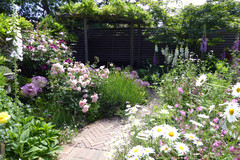



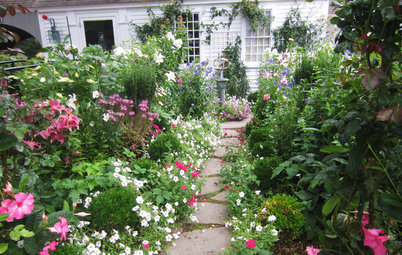
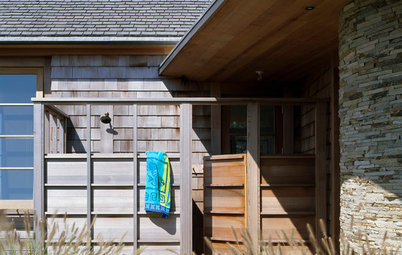
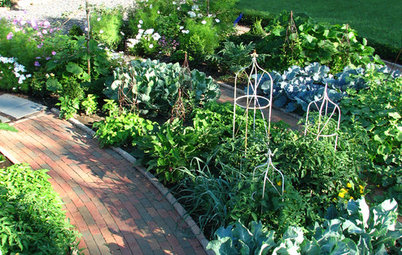
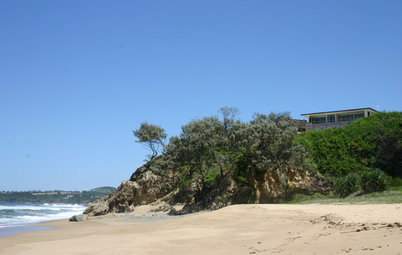


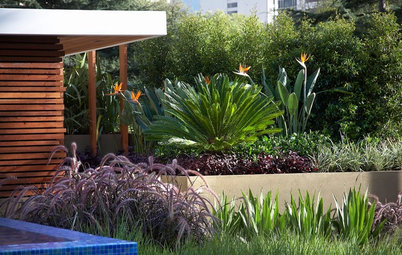
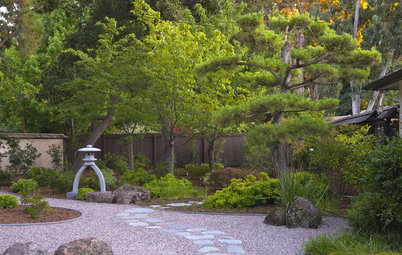
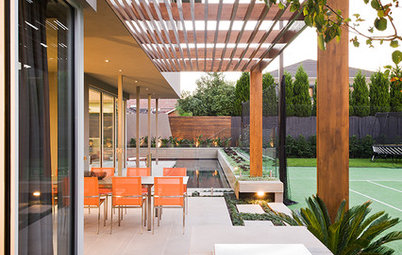

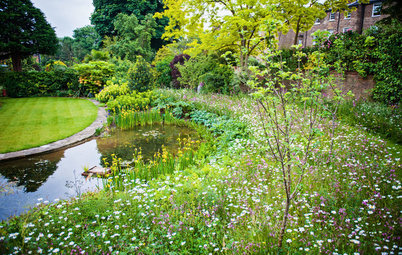
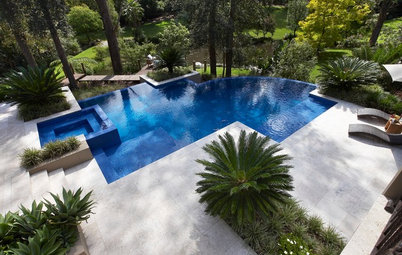
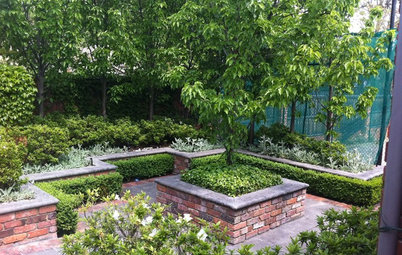
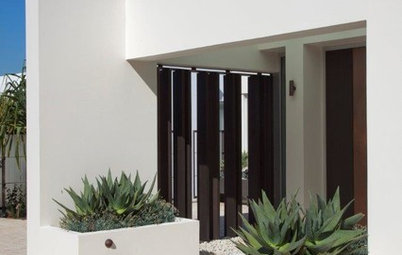
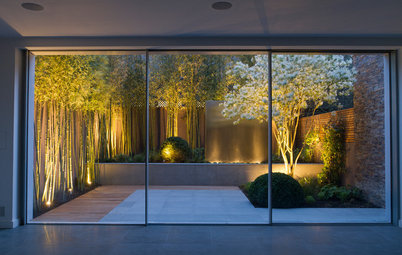
You’ll love it if… You prefer relaxed, informal gardens with gentle sweeps of grasses, flowers and other plants. You’ll also like a seasonal look with seed heads and spent flowers left on plants during the winter so their seed is either spread naturally through the garden or to provide food for birds.
Difficulty ranking: Achieving a naturalistic look does require some human intervention or the garden will eventually become untidy. Regular weeding is essential, as is the division and replanting of perennials and grasses. Flowering plants always do better with a regular feeding regime.
Key plants: Grasses and flowering perennials, particularly those that self-seed easily.